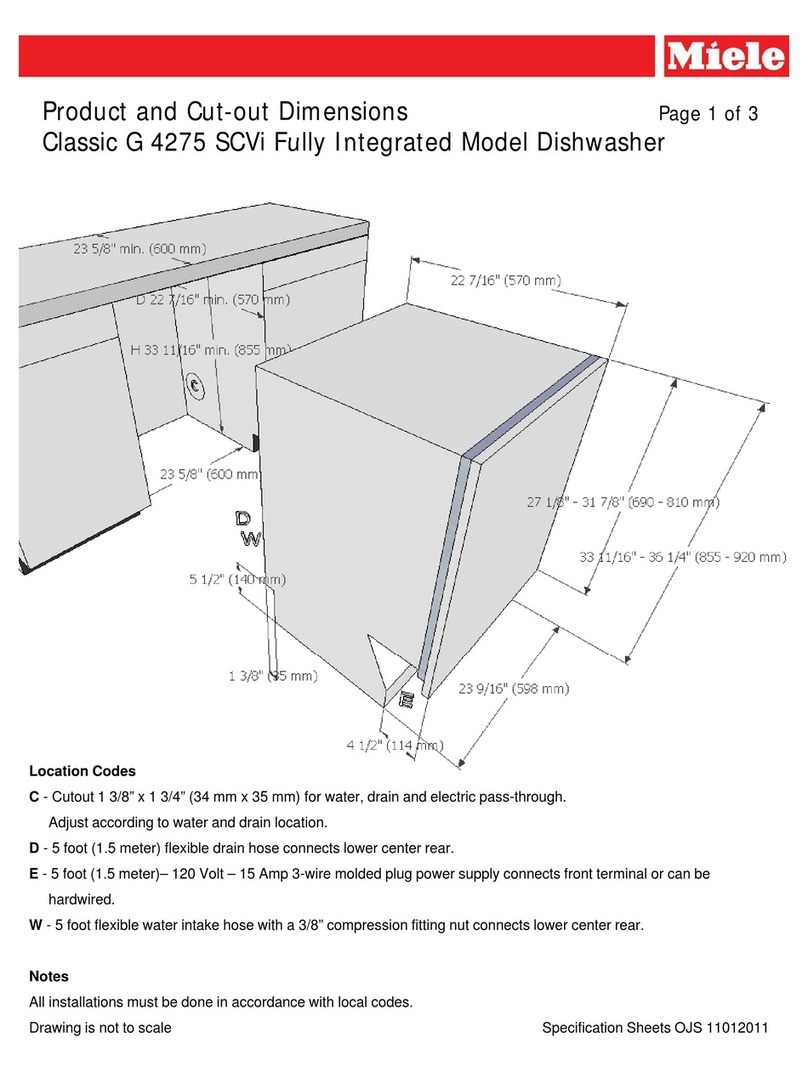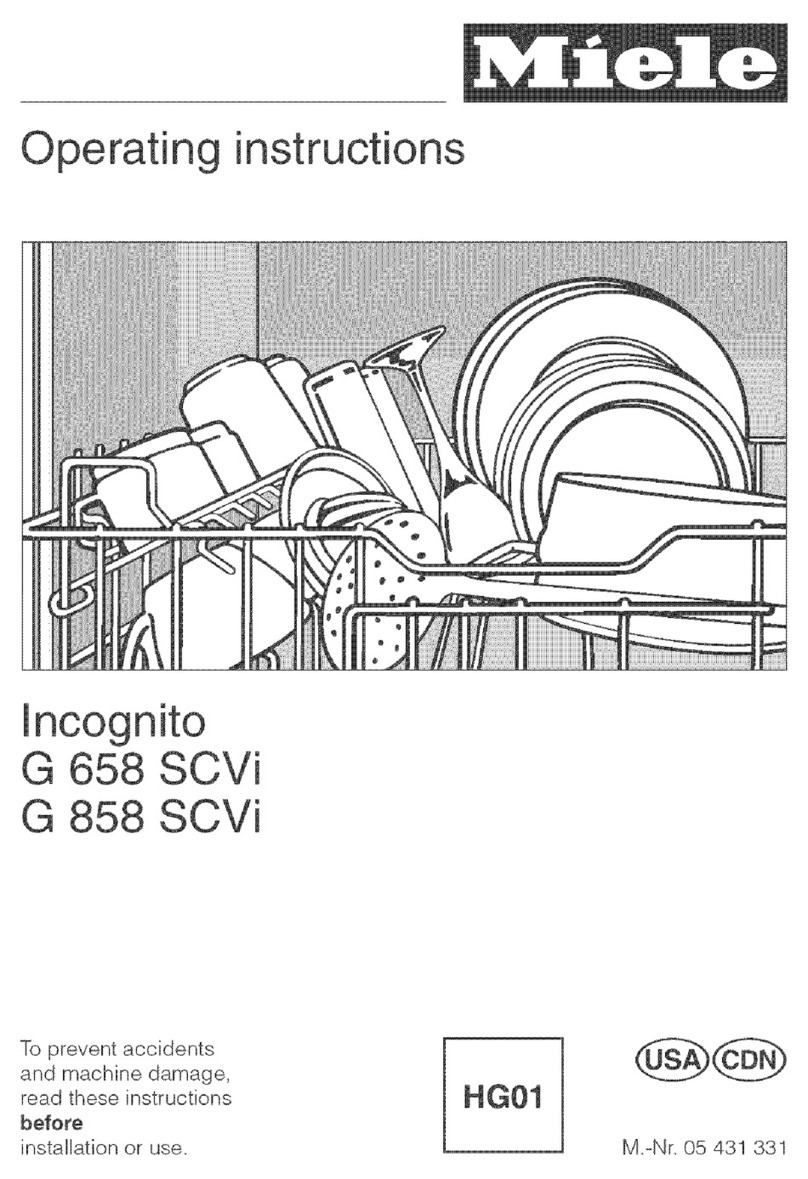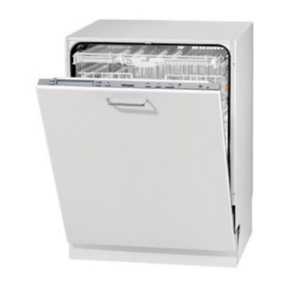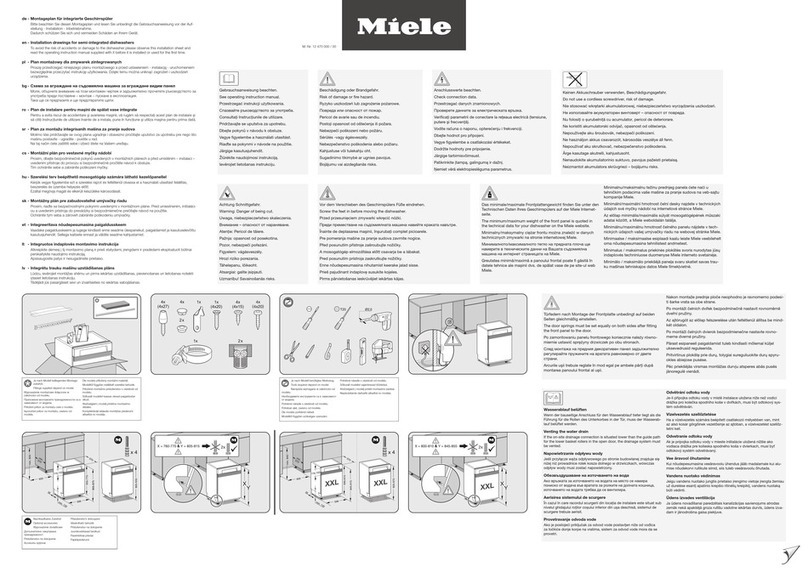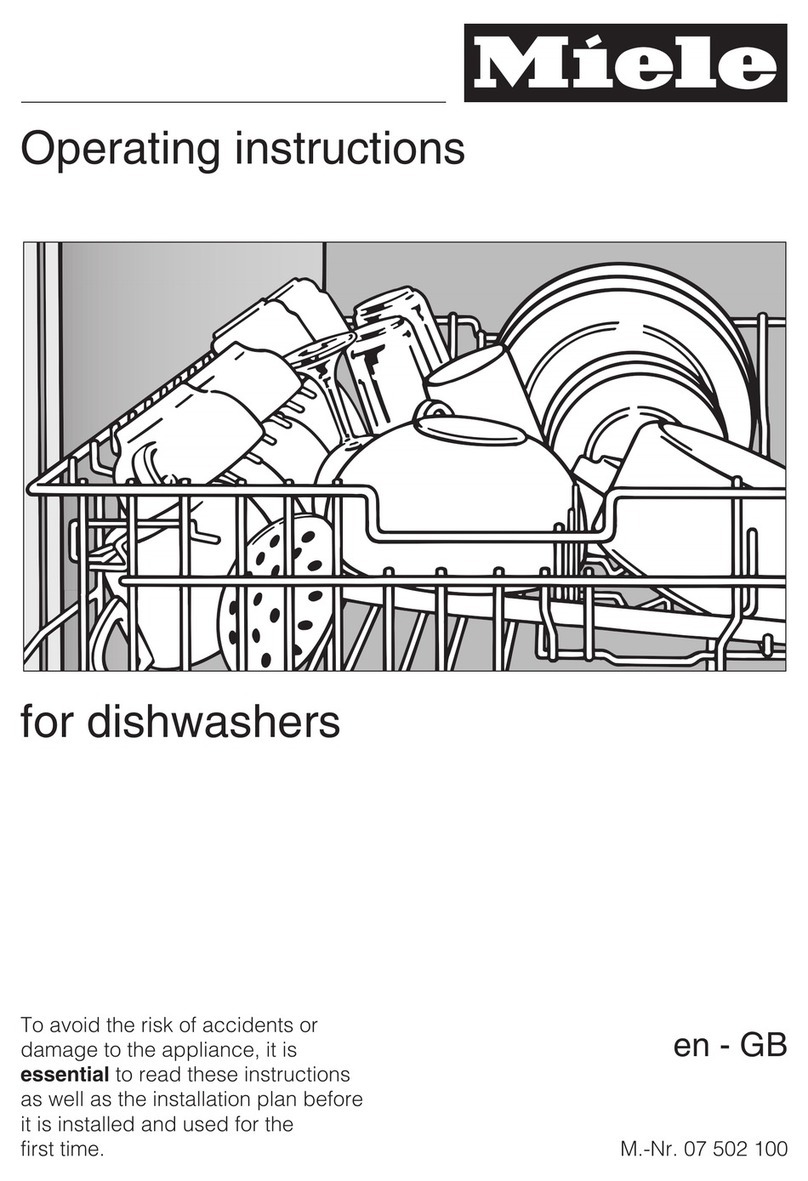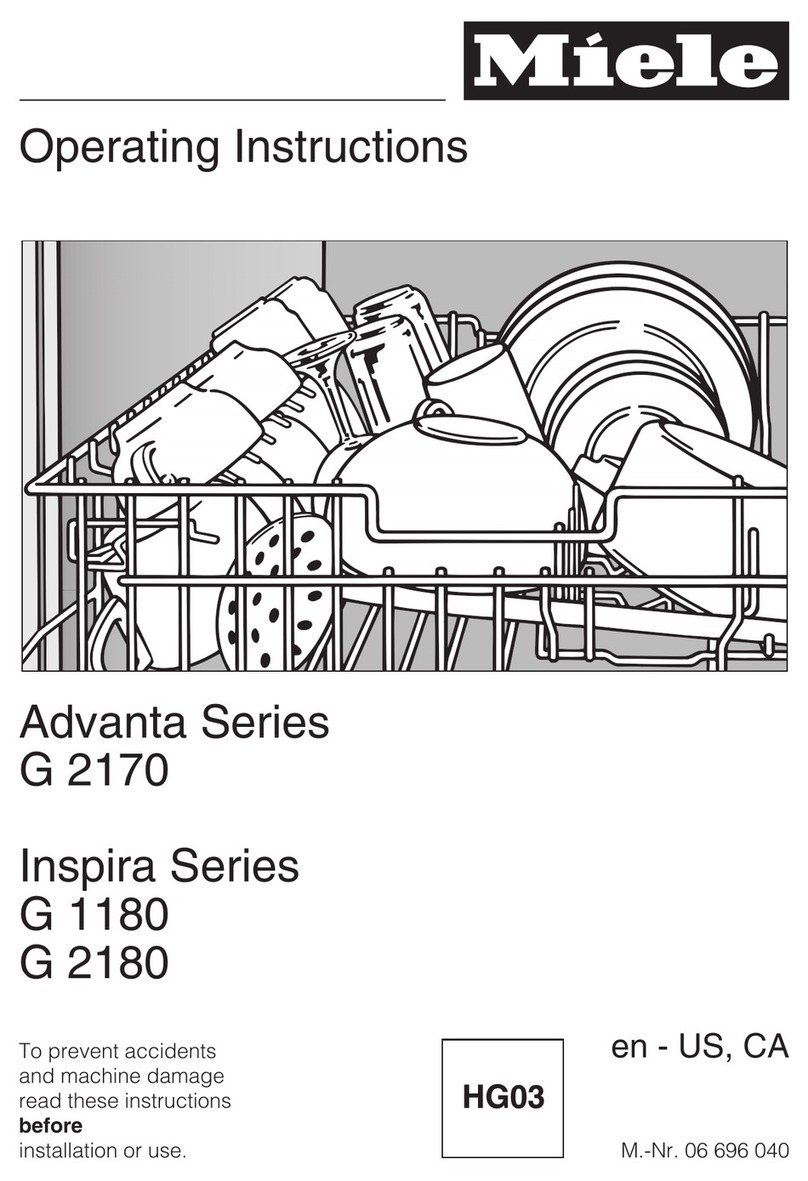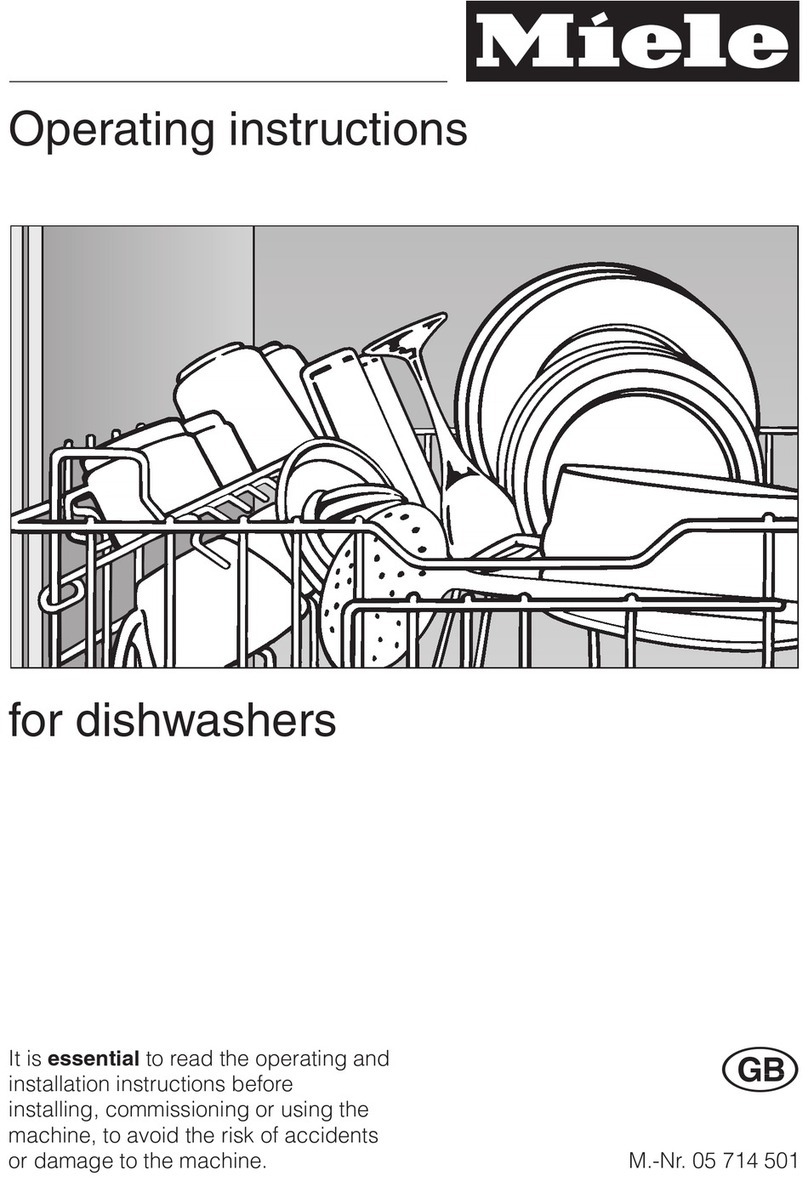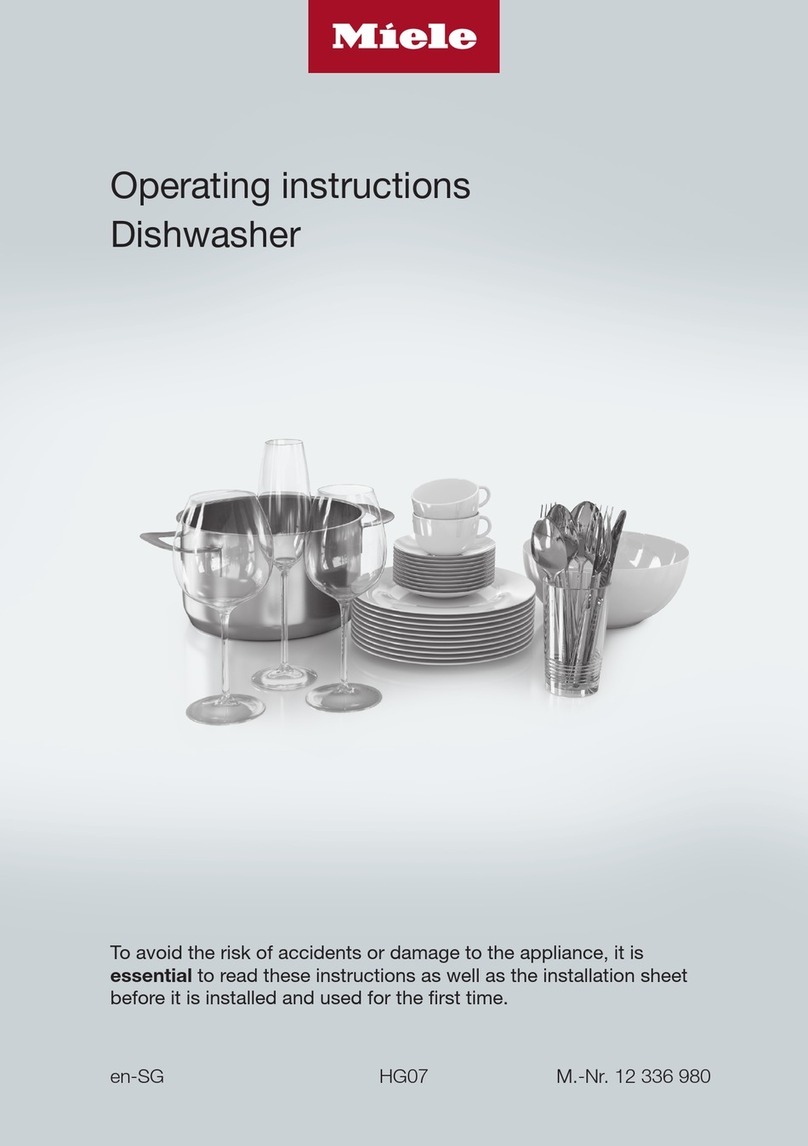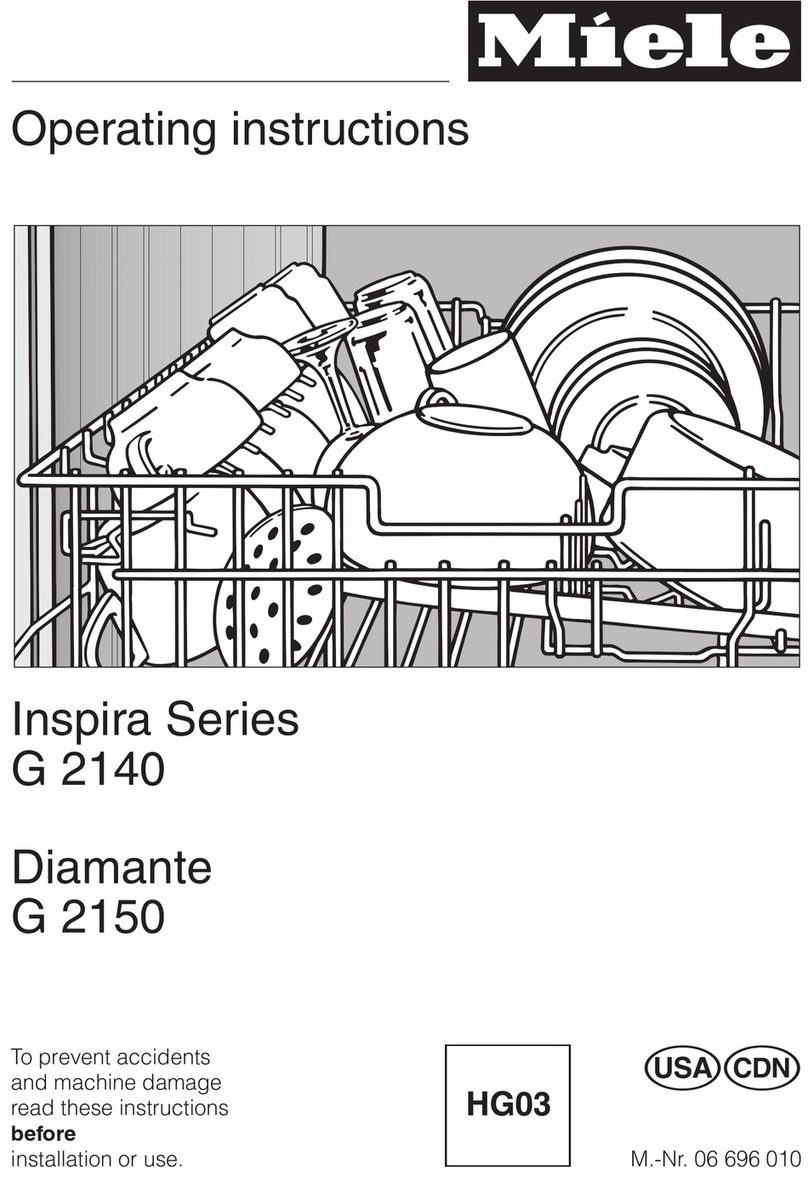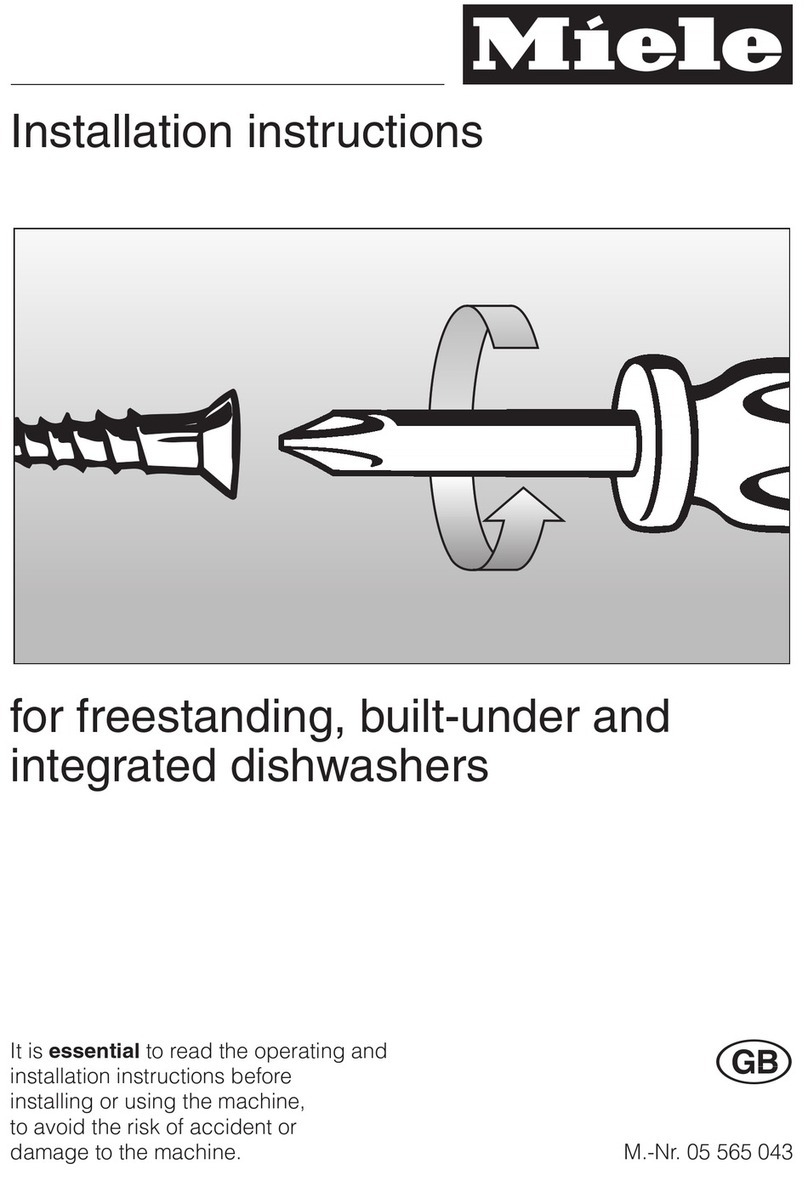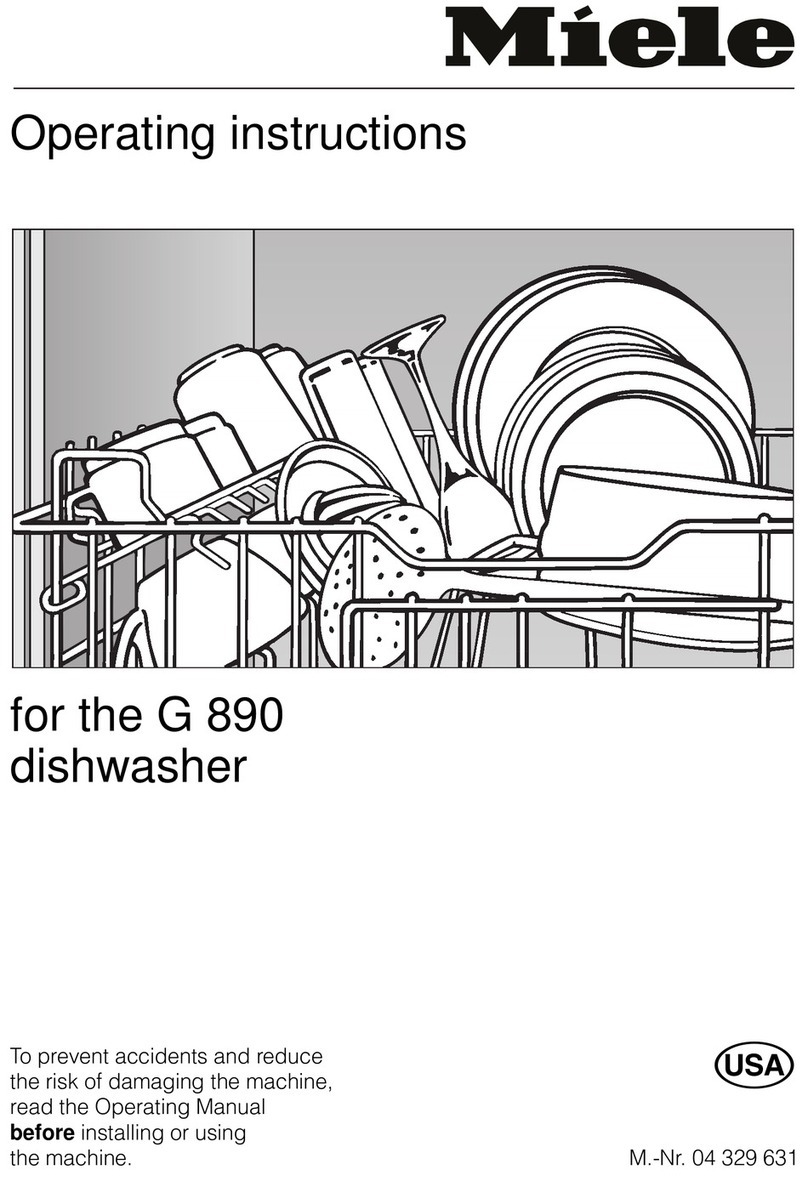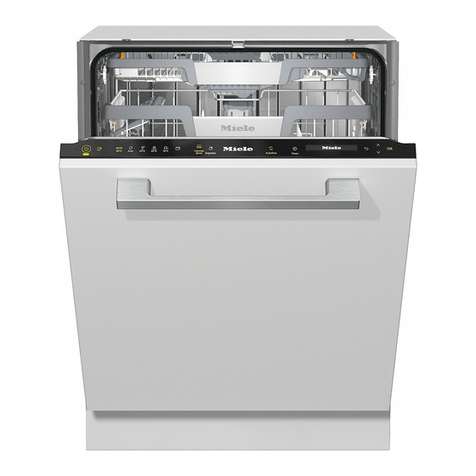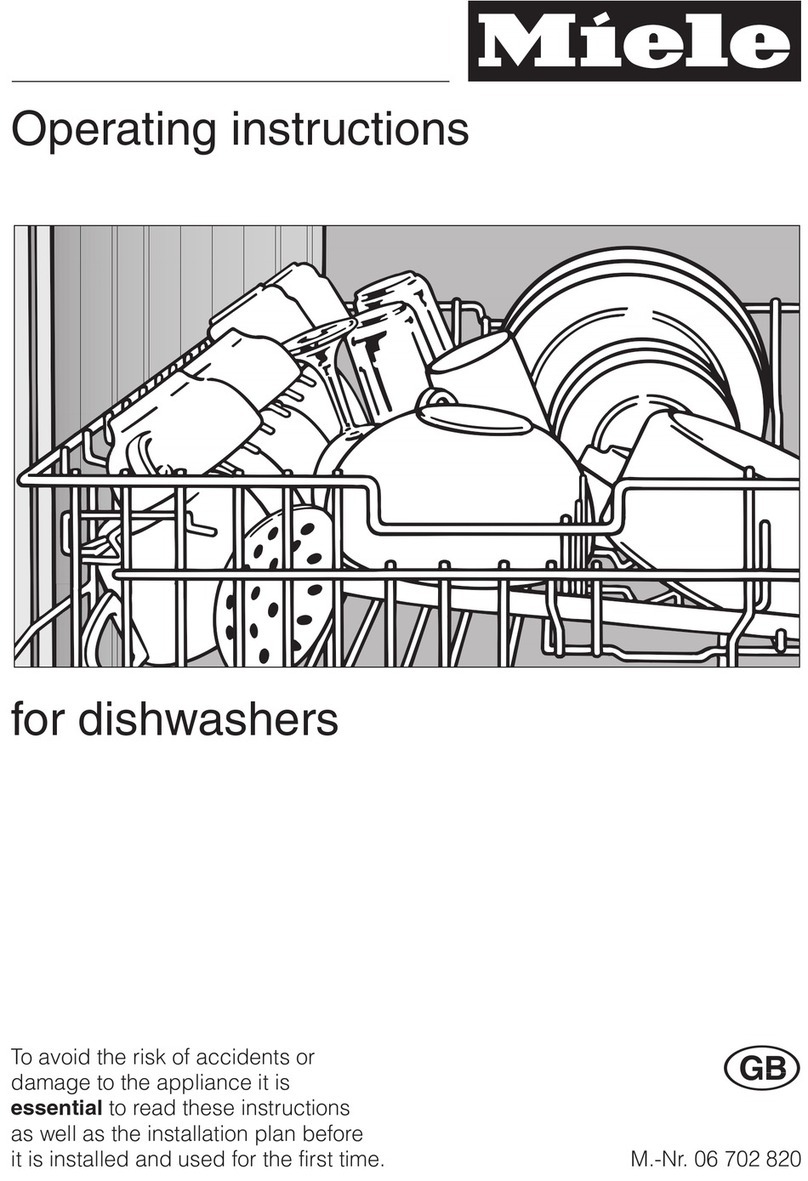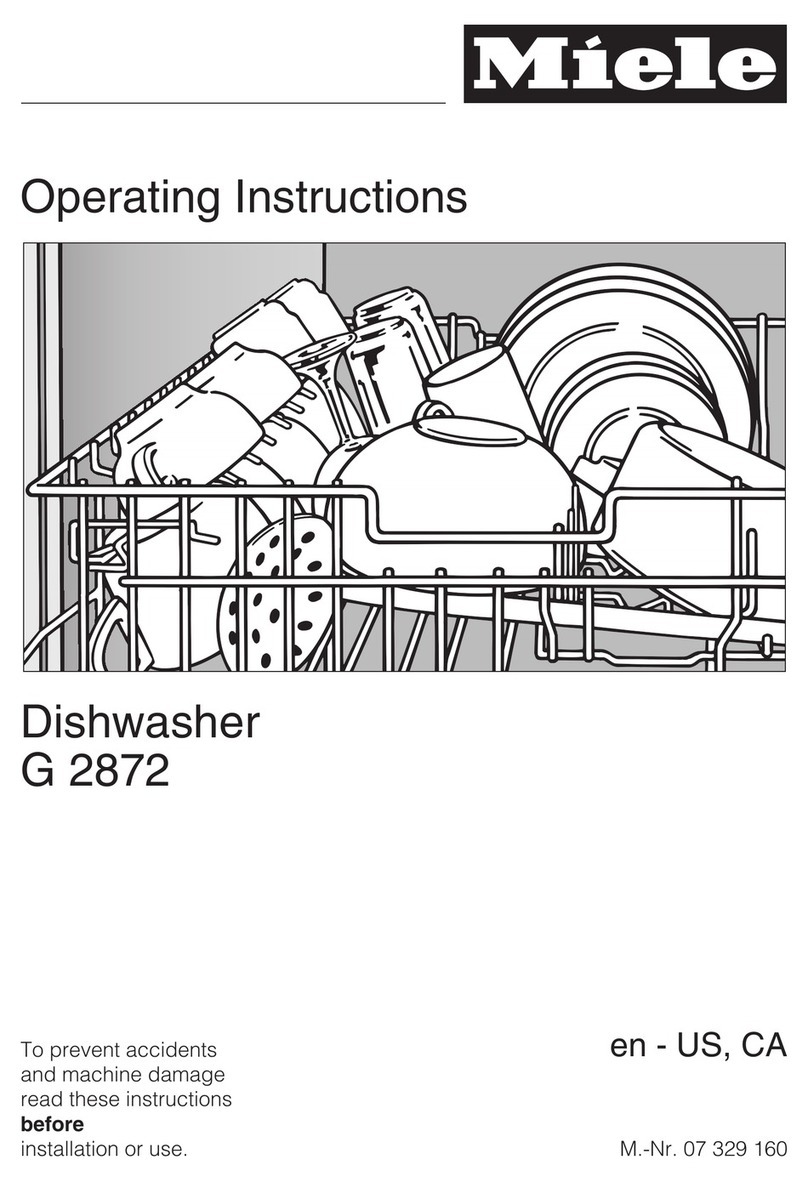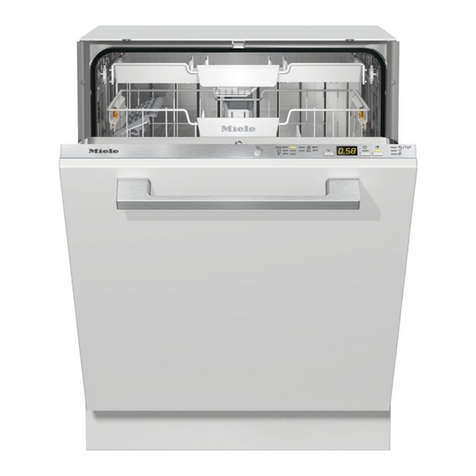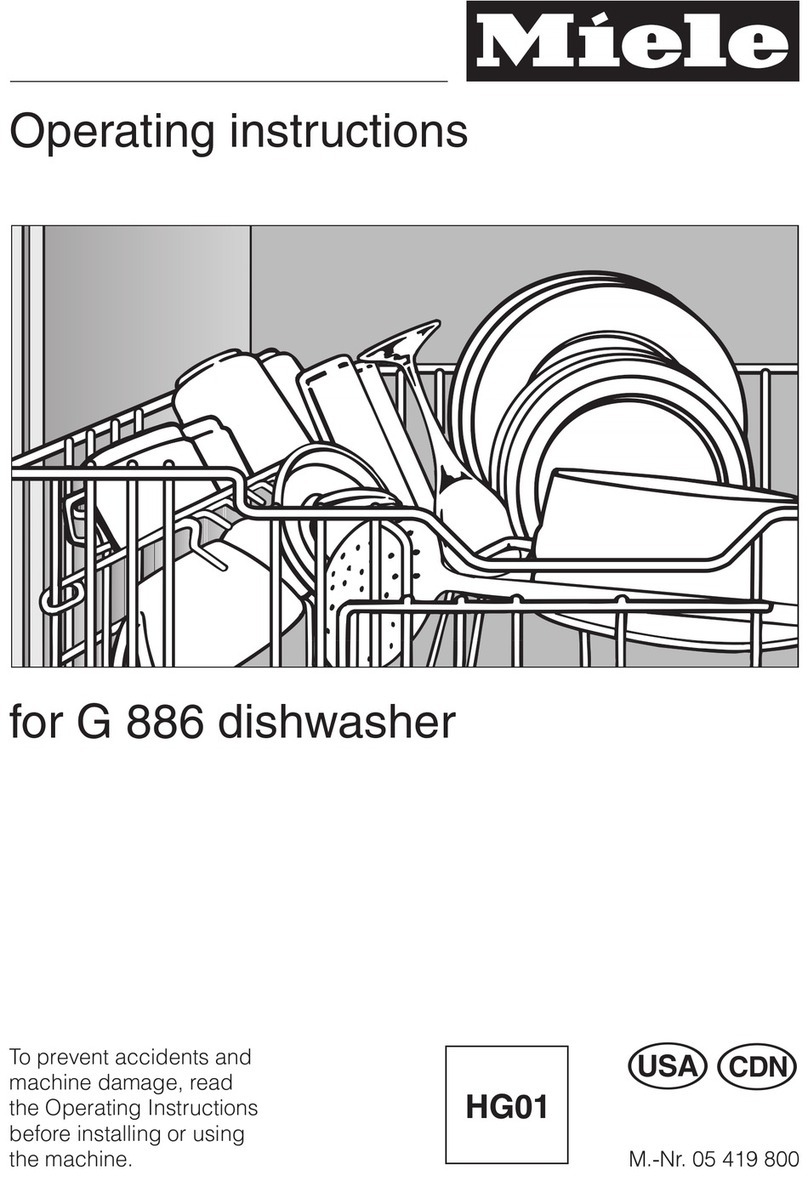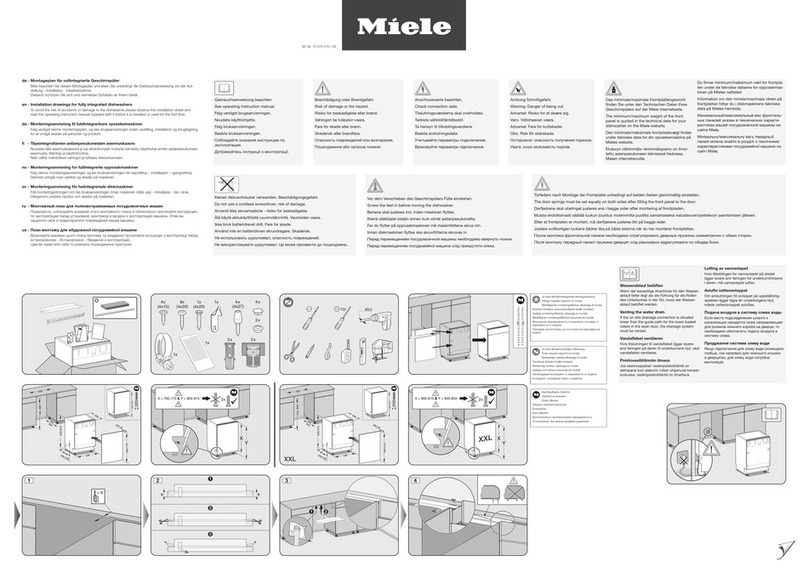Personnel operating the machine
should be trained regularly.
Untrained personnel should not be
allowed access to the machine or its
controls.
This machine is not a toy. Do not
allow children to play in or around it
or to operate it. There is a danger that
they could injure themselves or get into
the machine and lock themselves in.
Take great care when handling
liquid agents and additives. These
may contain irritant or corrosive
ingredients. Do not use organic
solvents as these could cause an
explosion. Follow all relevant safety
procedures carefully. Wear protective
gloves and goggles. With all chemical
agents, the manufacturer's safety
instructions must be observed.
Avoid inhalation of powder
cleaning agents. They can cause
burning in the mouth and throat if
swallowed, and can inhibit breathing.
The water in the machine must not
be used as drinking water.
Do not sit or lean on the opened
door. This could cause the
machine to tip up and be damaged or
cause an injury.
Be careful when sorting items with
sharp pointed ends and
positioning them in the machine that
you do not hurt yourself or create a
danger for others. Sharp knives, forks
etc. should be placed in baskets with
the pointed ends facing downwards.
When using this machine in the
higher temperature ranges be
especially careful not to scald or burn
yourself when opening the door.
Baskets and inserts must be allowed to
cool down before they are unloaded.
Any water remaining in containers
could still be very hot. Empty them into
the wash cabinet before taking them
out.
Do not touch the heating elements
or the heated surfaces on the wash
cabinet floor during or directly after the
end of a programme. You could burn
yourself. They remain hot for some time
after the end of the programme.
Never clean the machine or near
vicinity with a water hose or a
pressure washer.
Before any maintenance or repair
work is carried out, the machine
must be disconnected from the mains
supply by switching off at the mains
and withdrawing the plug from the
socket or by withdrawing the mains
fuse.
Warning and Safety instructions
10
